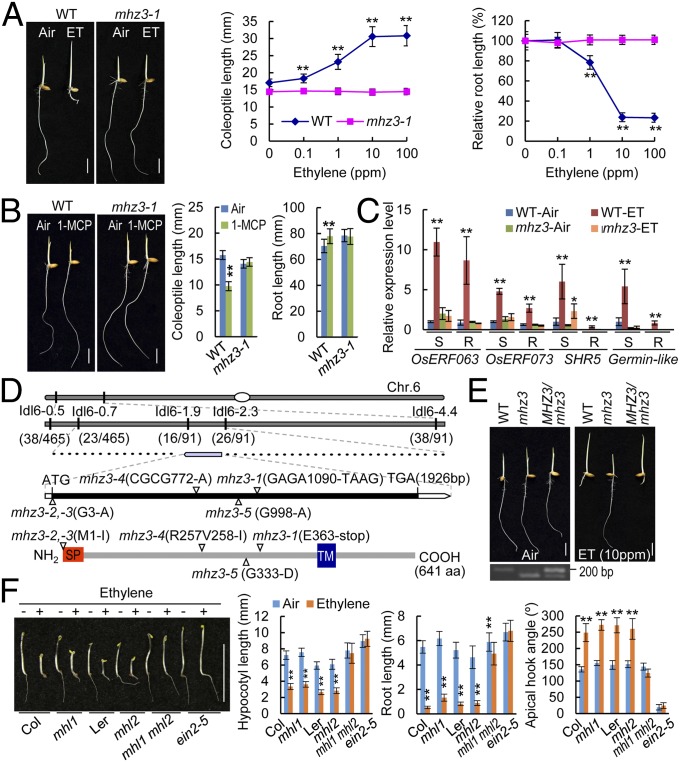Fig. 1.
Phenotypic analysis and gene identification of mhz3. (A) Ethylene-response phenotype of mhz3. Etiolated seedlings were treated with various concentrations of ethylene for 3 d. Representative seedlings grown in the air and in 10 ppm ethylene (ET) are shown (Left). Coleoptile (Center) and root lengths (Right) are means ± SD, n > 30 (**P < 0.01; Student’s t test; compared with 0 ppm). (B) mhz3 is insensitive to 1-MCP. (Left) Etiolated seedlings were treated with 10 ppm 1-MCP or without (Air) for 3 d. Coleoptile (Center) and root lengths (Right) are means ± SD (n > 30). Asterisks indicate significant difference between Air and 1-MCP (P < 0.01; Student’s t test). (C) Ethylene-induced gene expression is abolished in mhz3. Total RNAs from etiolated 2-d-old seedlings treated with 10 ppm ethylene or without (Air) for 8 h were subjected to qRT-PCR analysis. Data are means ± SD, n = 3 (*P < 0.05, **P < 0.01; Student’s t test; compared with Air). R, root; S, shoot. (D) Map-based cloning of MHZ3. The mutation sites are indicated in schematic diagrams. (E) Functional complementation of mhz3-1 with WT MHZ3 genomic DNA (Upper). (Lower Left) Confirmation of the transgene by PCR. (F) Triple response of mhl1 mhl2 double mutant of Arabidopsis. (Left) Etiolated seedlings were treated with (+) or without (−) 10 ppm ethylene for 4 d. (Right) Data are means ± SD, n > 15 (P < 0.01; Student’s t test; compared with “Air”). (A, B, E, and F scale bars, 10 mm.)

